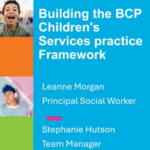The 26 pages of Mr Justice Buckley’s judgement on the case for
damages brought by two adoptive parents against Essex council would
make painful reading for any adoption service.
In the first case of its kind, on 18 December last year, Justice
Buckley ruled in the high court that Essex council had breached its
duty of care to the couple. He cited its failure to provide
sufficient information about two siblings’ troubled histories to
enable the couple to make an informed decision over whether to
proceed with an adoption.
The unnamed couple, who cared for the brother and sister – aged six
and three at the time – for 14 months before the adoption order was
granted in May 1997, claimed they would never have gone ahead with
the placement had they known the full information about the boy’s
violent behaviour. They said social workers had known of his
behaviour, but had not passed on the information, instead painting
an unrealistically rosy picture of him.
The boy, now 12 and cared for at a residential school, was later
diagnosed as suffering from attention deficit hyperactivity
disorder. During his time in the adoptive parents’ care he was
continually abusive, threatening and disruptive, and eventually
attacked his adoptive mother while she was pregnant.
While a lot may have changed in adoption practice in the five years
between the adoption being completed and the case coming to court,
the deficiencies highlighted could have far-reaching implications –
especially considering the government’s drive to promote
adoption.
The council disputed the couple’s allegations that it had failed to
inform them of the boy’s behavioural problems, and argued that a
ruling that the council had a duty of care to the prospective
adopters could deter other agencies from making placements.
Justice Buckley disagreed. “Any suggestion that a prospective
adopter should go ahead without the fullest information about the
child in question would be untenable,” he said.
But Felicity Collier, chief executive of Baaf Adoption and
Fostering, echoes Essex council’s concerns that fears over
placement breakdown and the potential for subsequent legal action
could discourage some authorities from finding adopters for
harder-to-place children.
“I hope it is not the case, but it is a risk,” she says. “It is
important that local authorities continue to take brave decisions
that allow our most disadvantaged children the security and
opportunity that adoption provides by giving them a permanent
family.”
However, specialist children’s lawyer Richard White, a committee
member of the Association of Lawyers for Children, dismisses as
“absurd” the claim that agencies could be deterred by the ruling,
adding that any such argument “sounds like a case put by
insurers”.
“The alternative would be that an authority could hide problems
from prospective adopters and leave them to discover the problems
emerging from the child’s life experiences,” he says.
White refers to a separate case he is handling, where an authority
“doesn’t appear to understand the risks for the adopters
post-adoption” when dealing with children from troubled
backgrounds. “In effect, the authority is saying you are on your
own after the adoption order has been made,” he says, warning that
this is common where children are adopted outside a local
authority’s boundaries.
Leading children’s lawyer Allan Levy QC says the Essex case has
“concentrated people’s minds” on the fact that agencies cannot
“sit” on relevant information. He believes that by authorities
having a more open approach to disclosing information, “whether
helpful or not”, it may put off some prospective adopters
from coming forward.
“Standards vary considerably [across the country] – some agencies
‘forget’ to mention a particular factor because the end justifies
the means. Authorities are having to place older children with
greater difficulties and there is a temptation to hold back
information that could put off prospective adopters. It is a very
human failing,” Levy says.
While not directly blaming the government, he believes its adoption
campaign could be making the problem worse. “The danger of the
government’s enthusiasm for it is that certain children who are not
adoption material are pushed that way and then it goes
wrong.”
The sad irony about this case is that Essex has an enviable record
for finding adopters for hard-to-place children. Its adoption
service has also been singled out as an example of best practice
and has received beacon status.
Sue Cook, manager for children’s placements and resources at Essex,
says it is a “red herring” to suggest that some children are being
pushed towards adoption inappropriately.
“We have a history of placing hard-to-place children for adoption
safely,” she says. “Every year we place 90 children, with only 4.3
per cent of adoptions breaking down compared with a national figure
of one in five.”
Under adoption regulations, agencies must provide written
information about the child to the prospective adopter before
placement, covering such issues as personal history, background and
previous and current state of health.
Most believe the regulations are clear enough. But Cherry Harnott,
head of adoption services at Portsmouth and a member of the
Adoption and Permanence Taskforce, says they may be tightened when
the Adoption and Children Act is implemented later this year.
“There is a vast difference in practice around the country and I
think the department of health is hoping to address that in the
act,” she says.
Cook agrees, adding that any updated regulations may state in more
detail what information needs to be sent.
“Currently, we don’t have to routinely give the adopter all
previous assessments of children and are only required to provide a
summary of the child’s life, history and medical details through
the Form E bundle,” she says. “It might say in more detail what
previous information – such as whole family assessments and court
reports – must be provided.”
Essex was found to be liable because of failures on the part of
social workers to properly record observations and pass on
information to the prospective adopters, coupled with
administrative blunders. In a number of instances it could not
disprove the couple’s claims that they did not receive vital
information.
It is true that practice has been updated on this since 1997. Essex
now sends all documents by registered post, a decision taken before
the judgement. Elsewhere contracts are now drawn up detailing the
information adopters have received. But some believe the case could
lead to a further rethink of how information is imparted.
Collier says the case will encourage agencies to look again at
their working practices and procedures. “It is good practice to
provide adopters with written and verbal information so that it can
be looked at subsequently.”
One problem for social workers to overcome is that some prospective
adopters may refuse to recognise that a child could be too much for
them to handle. As chairperson of the children and families
committee of the Association of Directors of Social Services, Jane
Held, puts it, “they are so desperate for a child they will not
hear some of the messages”.
Ann Frewin, Barnardo’s family placement principal policy officer,
says it is good practice to prepare adopters for the worst. “But
some will say you are always painting a negative picture of the
child,” she says. “They don’t want to hear all the negatives and
will deny being told about them.”
The case is unlikely to be the last of its kind and the result of
the appeals both the couple and Essex are likely to launch –
against the limited damages and against the decision respectively –
is bound to focus the spotlight on adoption procedures even
more.
The high court verdict available
here



 Bournemouth, Christchurch and Poole
Bournemouth, Christchurch and Poole  Hampshire County Council
Hampshire County Council  Oxfordshire County Council
Oxfordshire County Council  South Gloucestershire Council
South Gloucestershire Council  Wokingham Borough Council
Wokingham Borough Council  Webinar: building a practice framework with the influence of practitioner voice
Webinar: building a practice framework with the influence of practitioner voice  ‘They don’t have to retell their story’: building long-lasting relationships with children and young people
‘They don’t have to retell their story’: building long-lasting relationships with children and young people  Podcast: returning to social work after becoming a first-time parent
Podcast: returning to social work after becoming a first-time parent  How managers are inspiring social workers to progress in their careers
How managers are inspiring social workers to progress in their careers  Workforce Insights – showcasing a selection of the sector’s top recruiters
Workforce Insights – showcasing a selection of the sector’s top recruiters 

 Facebook
Facebook X
X LinkedIn
LinkedIn Instagram
Instagram
Comments are closed.